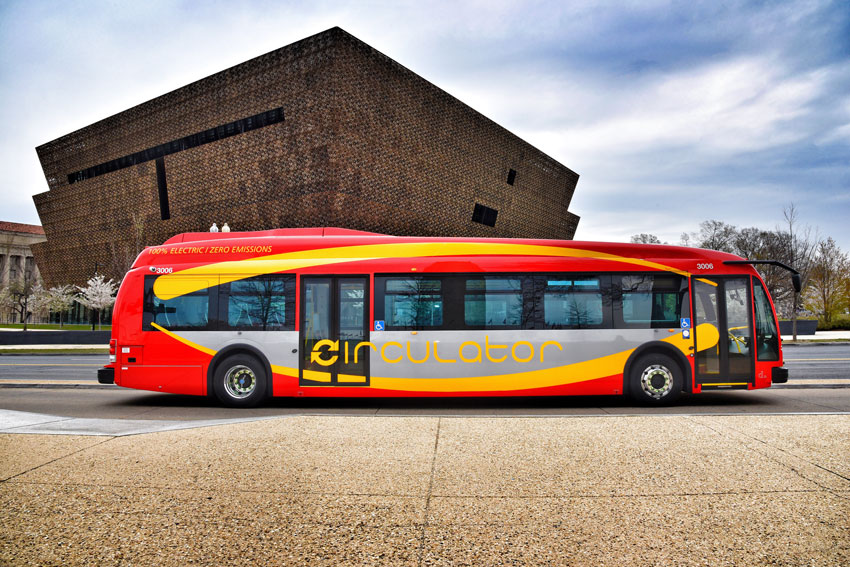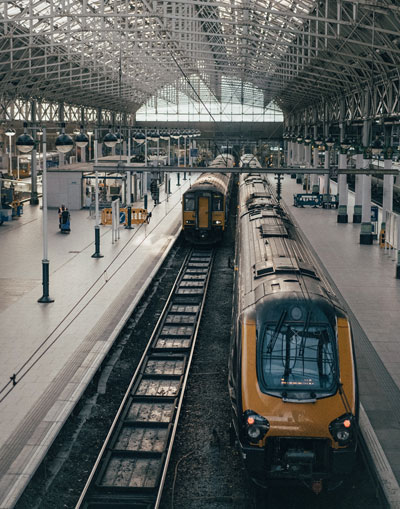Bus Wash and Train Wash Systems: How do Trains and Buses Keep Clean?
Nov 12th 2018

Is there a railroad “car wash” out there for trains (and large road vehicles like trucks and buses)? As a matter of fact, yes! There are giant vehicle washes for buses, trucks, and trains that keep our infrastructure looking clean. Today in the NS Wash blog we’re looking at bus and locomotive coach cleaners: the people who make it work, and the tools and technology they use.
A Dirty Problem
If you’ve ever caught a public bus or train, you would have noticed the number of people who are constantly getting on and off—bringing their dirt, germs, and spilling sticky drinks. In the rainy season, mud gets trampled all over the floor, and cold and flu particles fly all around—making frequent cleaning of paramount importance for the sake of public health and safety.
Clearly, there’s a strong need for bus and locomotive coach cleaners. So, you may be wondering: How often do bus wash and train wash routines take place? How thoroughly are they cleaned? And how does a “railroad car wash” work?
Let’s find out!
Cleaning on a Schedule
As it turns out, hundreds of bus and locomotive coach cleaners are employed across the country to keep our public transportation vehicles clean so that passengers can have a safer and more pleasant journey. A clean transportation system increases users’ confidence and comfort and makes travelers more likely to use public transport. This makes cleaning a top priority!
Every night, buses and trains that have finished their scheduled trips are stored, cleaned, and prepared for the next day. These late-night and early-morning hours don’t go to waste: They are used to keep the vehicles up and running. From daily cleanings, to less frequent, deeper cleans that remove the build-up of dirt, grime, and bacteria to maintain a healthy environment, the off hours are when bus and locomotive coach cleaners really shine.
The Bus Wash Schedule
After their final run of the day, buses are taken back to the depot where they are swept out and put through a pressurized bus wash. Vandalism or damage is noted, and if this can’t be fixed there and then, the bus is set aside until the needed repairs can be done. Buses are refueled overnight to make sure they are ready for the next day.
Every 45 days or so, buses undergo a more thorough bus wash. The ceiling, windows, handles, and grab rails are all washed with detergents and disinfectants and the floor is mopped thoroughly. Upholstered seats are cleaned with a carpet extractor and damaged pieces of furniture are repaired or replaced. Deodorizers may also be used to freshen up the smell inside the vehicle. This fresh scent is always a good telltale sign that the bus has just had its scheduled cleaning!
The Train Wash Schedule

Trains have a similar routine to buses. Each night (or whenever their routes end) they are taken back to the end of their lines (be it a yard, depot, or terminal) and the locomotive coach cleaners get to work: Each coach is swept through, wiped down as needed, and driven through a railroad car wash (or simply a “train wash,” as they are known inside the industry). Windscreen fluid is topped up and the sand boxes are refilled. Many people aren’t aware of this, but sand is released as needed to help with traction on the rails. Finally, the trains are positioned ready to set off on their first scheduled trips for the next day.
Every 6,000 miles, or roughly once a month, trains are cleaned thoroughly—just like in the 45-day bus wash. The windows and surfaces are cleaned with detergents and disinfectants and the floor is vacuumed and mopped. The seats are cleaned with an upholstery extractor and damaged seats and seat backs are replaced. It takes about eight hours for one locomotive coach cleaner to go through and clean an entire train.
Special Cleaners for Special Vehicles
Traditionally, all vehicles had to be washed by hand—a time-consuming and inefficient process that used a lot of water and human labor. Nowadays, transit and fleet vehicles are typically washed in drive-through wash facilities. The modern bus and locomotive coach cleaner process is streamlined, fast, and more environmentally friendly. Let’s take a look at how drive-through washers for buses and trains are designed and how they work.
Drive-Through Bus Wash Systems
An automated bus wash is similar to a car wash system but larger. These tunnels generally have between two and six vertical brushes to clean the sides and a horizontal brush to clean the front and back. Water squirts from two rinsing arches for the rinse cycle and there is a technical tower or board for wash-cycle control as needed.
Some drive-through washers are closed at the top to fit a specific vehicle size, whereas others are open and can accommodate even the largest coaches and trucks. An entire bus can be double-washed in one of these systems in as little time as eight minutes, or sometimes even less!
Drive-Through Train Wash Systems
A drive-through train wash or railroad car wash is somewhat larger than a bus wash system—mainly due to the length of trains and the overhead contact line required by electric trains to move. The locomotive coach cleaner bays are designed for a specific model of train to accommodate its powering needs (electric or diesel), its total length, its height off the ground, and the specific shape of the front of the train. (Depending on the model, the front end of trains range from almost flat to aerodynamic models with a pointed nose.)
The railroad car wash process follows the standard cycles used in a car or bus wash:
- A rinse cycle (usually with recycled water) to remove dirt, mud, and other particles.
- A detergent cycle with brushes to cut through grease and grime.
- Another rinse cycle to remove the detergent.
- A drying cycle in cold countries to prevent the water from freezing on the train.
In the first two stages of the locomotive coach cleaner process, the train is still moving forward. After the detergent is applied, the train comes to a complete stop and the front of the train is washed while the product is allowed to work on the body. For the last rinse cycle, the train moves at about 1.5 – 3 mph until it comes all the way through the bay.
Whereas a bus wash only needs a firm surface underneath the wheels, a railroad car wash needs to have a railway track running through the entire bay to allow the train to move. This is very doable, and at NS Wash, we have been making outstanding train washes for decades, but a full train wash is still pretty awesome to see in person.
Keeping the Tracks in Shape
While train washes are helpful, the actual train isn’t the only part of the rail system that needs cleaning and maintenance. The next step in the locomotive coach cleaner process is all about the tracks: The metal tracks, the ties that hold them an equal distance apart, and the rocky cushioning material that supports the tracks as the full weight of the train passes over them (called “ballast”) all need to be cleaned too.
This special job is performed by a fully-automated machine called a “ballast cleaner” that goes along the track, lifting up the rails and cleaning the ballast in a conveyor-belt system before re-placing and re-securing the rails. This protects the tracks as well as making each locomotive coach cleaner and more durable by removing debris and preventing track wear that can prematurely age train cars.
The massive ballast-cleaning machine makes it unnecessary to hire the thousands of rail workers that were required to lay many of these tracks in the first place. It keeps the railway system free from large debris that could jeopardize the train and passengers’ safety. It is just as vital if not more so than the railroad car wash facility itself!
How You Can Help Keep Buses and Trains Clean

The final link in the bus and locomotive coach cleaner process is you! With all the work that transportation companies put into their bus wash and train wash schedules, it is vital that each passenger do their part to help keep buses and trains clean. Here is what you can do to help your bus or locomotive coach cleaner:
- Refrain from eating and drinking during your journey (exception for water bottles).
- Throw your trash in designated trash receptacles or take it with you.
- Cover your mouth with a tissue to sneeze or cough, and throw the tissue into the trash.
- Avoid touching your face as much as possible.
- Wash your hands before and after traveling.
- Carry an antibacterial gel to use after traveling and before handling food.
- Let the driver or station attendant know if you see graffiti, vandalism, or other damage on the vehicle that needs to be repaired.
With each person taking responsibility, public transportation can be a cleaner, safer system for all!
Source Premium Vehicle-Cleaning Equipment from NS Wash
We hope that explains the lengths that transit agencies go to in order to make your bus or locomotive coach cleaner!
NS Wash has been in the vehicle-cleaning business for over 50 years and is known around the world as an innovator in low-maintenance, automated wash design for heavy vehicles and commercial fleets.
Want to learn more about the bus or locomotive coach cleaner process? Looking to purchase or upgrade your bus or railroad car wash for your agency? If you have transit vehicles or a fleet that requires a new bus wash or transit wash system or have an existing wash system that you would like optimized, please contact us to find out how we can help.
